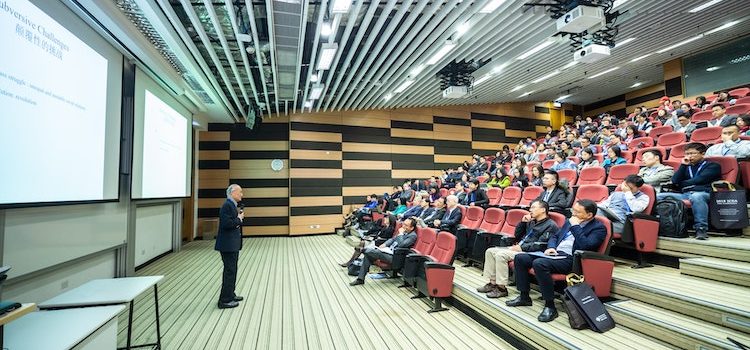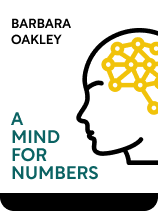

This article is an excerpt from the Shortform book guide to "A Mind for Numbers" by Barbara Oakley. Shortform has the world's best summaries and analyses of books you should be reading.
Like this article? Sign up for a free trial here .
Would you like to be a better learner? What study principles can serve you in school and for the rest of your life?
If you’d like to learn how to become a good student, you can benefit from Barbara Oakley’s insightful and perhaps surprising strategies to get the most out of your studies. Her five principles include managing your competitive nature and using equation poetry.
Continue reading to learn about these principles.
Become a Better Student
In A Mind for Numbers, Oakley explains how your brain works. She provides strategies for understanding and remembering material, building good study habits, avoiding procrastination, and taking tests. Let’s examine a few more principles that Oakley says can help you get the most out of your studies.
Principle 1: Beware of Hidden Weaknesses
According to Oakley, identifying its own weaknesses is one thing your brain does not do well. When we think we understand a concept better than we actually do, we are suffering from an “illusion of competence.” If you want to learn how to become a good student, you should become aware of your hidden weaknesses. Oakley identifies certain study methods that can contribute to illusions of competence:
- According to Oakley, actions like highlighting or underlining key concepts in a textbook make them stand out on the page but don’t embed them in your memory. Instead, write notes in the margin.
- If you can easily retrieve the information you need to work through a problem from your notes, textbooks, or other sources, this makes you feel like you’ve mastered the problem. However, as Oakley points out, if you can only retrieve it from external resources, and not from your memory, then you don’t really know it. You just know how to look it up.
| Comparing Illusions of Competence Oakley is not the only author to write about illusions of competence. In Make it Stick, Brown, Roediger, and McDaniel explore illusions that can impede your learning, biases that can cause you to misunderstand or misremember information, faulty methods of studying, and remedies for these problems. They echo Oakley’s warning that rereading your textbook can fool you into thinking you’ve mastered the material without actually improving your long-term memory of the information, even if you take the time to highlight key terms or make annotations. Paralleling Oakley’s warning that knowing how to look something up isn’t the same as actually knowing it, they also identify a “fluency illusion.” If you can easily follow along when a process is presented in a book or a lecture, it is tempting to think you’ve mastered it, but just because you can follow along doesn’t necessarily mean you could reproduce the process or solution yourself. Brown, Roediger, and McDaniel also discuss the problem of “oblivious incompetence”: It takes a certain amount of knowledge to identify gaps in your knowledge, so sometimes you just don’t know what you don’t know. For example, if you’ve never heard of logarithms, then you wouldn’t know to study them before taking a standardized mathematics test. Dispelling Illusions of Competence Aside from avoiding ineffective study methods, as Oakley advises, Brown, Roediger, and McDaniel offer several remedies for illusions of incompetence: To test your comprehension and recollection of a subject, wait at least a day after studying it, and then try to explain it in your own words. Use “real-world simulations” to test your mastery of a subject or skill. In school, this could mean taking a practice test. Study with your peers so you can catch each other’s errors and fill in gaps in each other’s knowledge. Oakley also discusses the benefits of group study, which we will discuss next. |
Principle 2: Study With Groups
Oakley discusses the advantages of studying in groups. For one, your brain isn’t very effective at catching its own errors. Groups catch each other’s mistakes and resolves them more quickly.
Also, different people view information from different perspectives. When groups discuss study material, the conversation acts as a super-diffuse mode of thinking that can connect concepts from various brains. This can generate creative solutions and enhance each person’s understanding.
(Shortform note: This advice is echoed by Brown, Roediger, and McDaniel. They recommend peer reviews and collaborative learning as countermeasures against false perceptions and illusions of competence.)
Lastly, working in groups causes mild stress, which can be beneficial. Oakley says that practicing what you’re learning under mild stress helps you perform better under a higher level of stress.
Principle 3: Beware of Competition
Oakley explains that people are naturally competitive, and there are two ways this competitive nature can hold you back from achieving your full potential as a student:
- Oakley observes that when you excel, other people may criticize your achievements because they feel threatened by your success, and when you don’t excel, they may take the opportunity to eliminate some competition by telling you to quit. To avoid falling prey to these attacks, Oakley warns you to learn from your failures and listen to constructive criticism, but never let mean-spirited criticism prevent you from achieving your potential.
- According to Oakley, your own competitive nature can also get you in trouble by prompting you to over-commit yourself: take on more work than you can handle so that you appear “better” than your classmates. Thus, she advises that when you take classes in weighty subjects like math and science, don’t let your desire to compete with other students drive you to take on more coursework than you can handle.
| Competing for Power and Success Robert Greene echoes Oakley’s assertion that people are naturally competitive, and elaborates extensively on how people compete for power in The 48 Laws of Power. Oakley’s warning about envious peers criticizing your work is reinforced by Greene’s forty-sixth law: Watch for envy. Greene explains that peers and colleagues are especially susceptible to becoming envious because they are used to a semblance of equality, and thus will feel threatened if they perceive that you are surpassing them. He notes that they will often reveal their jealousy through sarcastic remarks or criticism, but may sometimes hide it behind a facade of praise while secretly trying to undermine your success. He advises diffusing jealousy whenever possible by attributing your success to luck rather than skill and downplaying your ambitions so as not to escalate competition. Likewise, there is a parallel between Oakley’s warning not to take on more coursework than you can handle and Greene’s forty-seventh law: Know when to stop. However, Greene explores a nuance of this principle that Oakley doesn’t: When you succeed at something, the emotional gratification can make you feel invincible. In these situations, Greene cautions you not to let your emotions drive you to overestimate what you can take on in the future. For example, maybe you took 15 credit hours last first semester and aced all your classes. You have a right to feel proud of yourself, but that doesn’t necessarily mean it’s a good idea to sign up for 20 credit hours next semester. |
Principle 4: Nurture Your Creativity
Earlier, we discussed Oakley’s assertion that alternating between focused and diffuse thinking promotes creative problem solving. We also discussed visual metaphors and other mnemonic techniques that connect diverse concepts in your mind, exercising your imagination as you create mental images to help you remember things. Alongside these principles, Oakley provides a few additional tips on stimulating or maximizing your creativity:
- Produce lots of ideas. Oakley points out that the more ideas you come up with, the more likely some of them will stand out as original or creative.
- Overcome your fears to unlock your creativity. According to Oakley, fear suppresses creativity.
- Be open to criticism of your work: Oakley notes that it often provides an alternative perspective that exposes new ideas or opportunities for improvement.
- Be willing to criticize others. Oakley highlights that, statistically, more agreeable people tend to be less creative and vice versa.
| Comparing Perspectives on Creativity Let’s compare Oakley’s advice on stimulating creativity to that of several other authors: Charles Duhigg In Smarter Faster Better, Duhigg proposes four principles of “productive innovation,” or creativity: Explore ways to combine old ideas in new ways. This seems like a new twist on Oakley’s observation that mentally connecting diverse concepts stimulates innovation. Shun cliches. Duhigg points out that cliches in art and literature are convenient for the artist but don’t feel authentic to the audience, and thus advises you to avoid any ideas that don’t feel meaningful or real. We can generalize this to include any design or device that is invoked for convenience rather than because it adds value. Recognize frustration and anxiety as symptoms of a deficiency in something, which signal an opportunity for a creative solution to make things better. Remain open to alternative ideas. This parallels Oakley’s advice to remain open to criticism. Susan Cain In Quiet: The Power of Introverts, Cain argues that two conditions stimulate creativity: solitude and intense concentration. As such, she recommends isolating yourself and immersing yourself in your field of study or interest to reach new creative insights in that field. At face value, Cain’s emphasis on concentration might seem to contradict Oakley’s assertion that we generate creative ideas by diffuse-mode thinking, rather than focused mode. However, Oakley also stresses that the diffuse mode only operates on information left over from sessions of deep focused-mode thinking. Thus, the more intensely you concentrate on a problem, the more likely your diffuse mode will find a creative solution when you do take a break. As such, provided your sessions of intense concentration are punctuated by adequate rest breaks, Cain’s model is compatible with Oakley’s. Ed Catmull In Creativity Inc, Catmull sets forth three directives for creating an environment where creativity can thrive: Promote candor. As Catmull uses it, “candor” means the ability to freely examine and criticize ideas without fear of it being taken personally. This reinforces Oakley’s points about being open to criticism and willing to criticize, as well as overcoming fear. Embrace failure. Catmull points out that when you explore creative ideas, inevitably some of them (usually most of them) won’t work. To find and benefit from really good creative ideas, you have to be willing to explore a lot of options that end up failing. This principle could be seen as an extension of Oakley’s point about generating lots of ideas. Protect new ideas. Catmull also points out that sometimes, creative new ideas can be crushed by objections to their potential problems before they’ve been investigated enough to see if their potential benefits could justify addressing those problems. As such, he recommends initially focusing on what makes an idea exciting, before scrutinizing its weaknesses. |
Principle 5: Unlock Hidden Meaning in Scientific Laws With Equation Poetry
According to Oakley, by recognizing that many scientific laws contain multiple levels of meaning, we can extend our understanding of science even further with “equation poetry.” As Oakley explains, scientific laws and theories act as models of reality that help us understand how nature works and predict its behavior. Thus, at some level, all the laws of science are metaphors. These laws are typically expressed in the form of equations, and these equations are a kind of poetry for scientists.
A poet often seeks to capture great depth of meaning in just a few words. Just as there are often multiple levels of meaning behind a line of poetry, there are often multiple levels of meaning contained in a superficially simple equation, and sometimes a single equation has several different interpretations at the conceptual level.
As an illustration of equation poetry, consider “Heisenberg’s uncertainty principle,” which is an important principle in quantum mechanics. (Shortform note: For more information on quantum mechanics, read our summary of A Brief History of Time.) Mathematically, Heisenberg’s uncertainty principle is expressed as:
In this expression, σ (the Greek letter sigma) stands for “standard deviation,” which is a measure of how much a series of numbers differ from each other. In this context, the standard deviation is a measure of uncertainty. Specifically, σx measures our uncertainty of a particle’s position, and σp measures our uncertainty of its momentum. All the terms on the right are constant values, so on the literal level, this mathematical expression states that the product of the uncertainty of a particle’s position and momentum is greater than or equal to a specific number.
Why does this matter? Because if we know the exact position and momentum of a collection of particles at one point in time, we can use the laws of physics to calculate their respective positions at any other time in the past or future. Everything in the universe is made up of particles. So hypothetically, if we could determine the exact position and momentum of every subatomic particle in your brain, we could build a computer model that would tell us everything you’ve ever thought and everything you ever will think.
And if we knew the precise position and velocity of every particle in the universe, then we could calculate every detail of its history and future. And yet, we can’t do this because we can’t determine both the position and the momentum of any particle to more than a finite degree of certainty. Thus, on a more poetic level, Heisenberg’s uncertainty principle is a mathematical expression of human free will, since it precludes the possibility of calculating all your future thoughts and actions.
| Oakley’s discussion of “equation poetry” seems a little more esoteric than most of the other content in the book. However, considering Oakley’s background, it arguably provides an example of a broadly applicable principle for achieving your full potential. Specifically, if you can find similarities between something you already understand and something you are struggling to learn, it will make the latter topic easier to parse and less intimidating. In Oakley’s case, she studied literature and languages before she took an interest in learning math and science. She admits that there was a time when she found equations intimidating, but it’s probably safe to assume that, given her education, she was comfortable with poetry. As such, her discovery of the similarities between equations and poetry may have been a major breakthrough in her studies, as she found a way to conceive a difficult concept she struggled with through the lens of something she already understood and appreciated. |

———End of Preview———
Like what you just read? Read the rest of the world's best book summary and analysis of Barbara Oakley's "A Mind for Numbers" at Shortform .
Here's what you'll find in our full A Mind for Numbers summary :
- How to make math and science intuitive
- Strategies for remembering complex concepts more easily
- How to build good study habits and avoid procrastination






